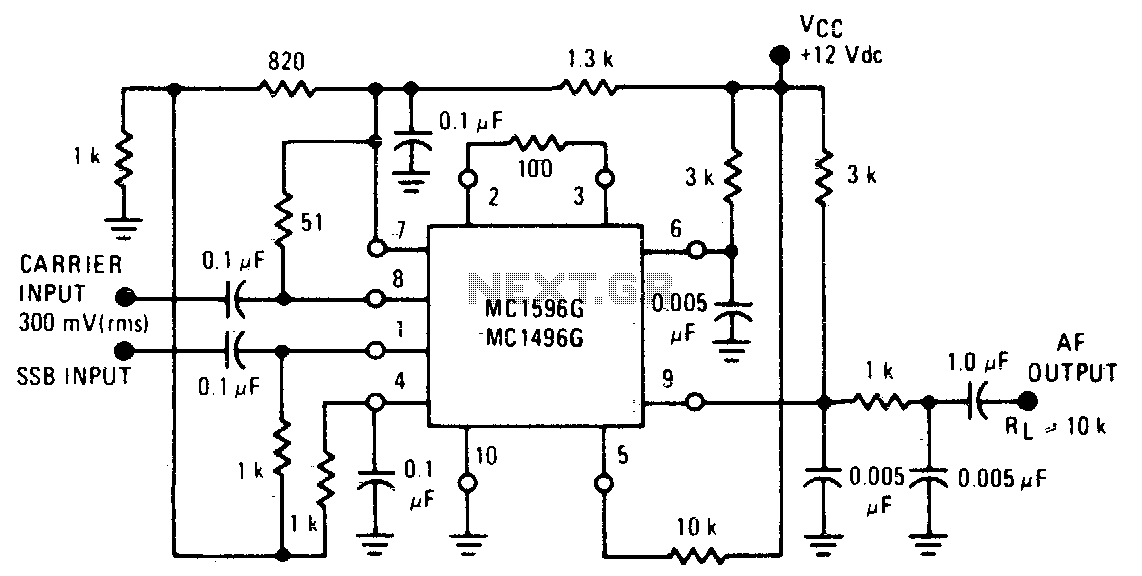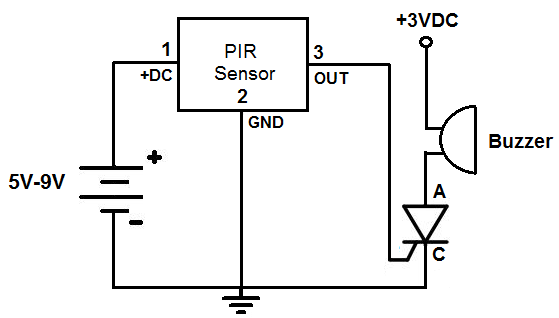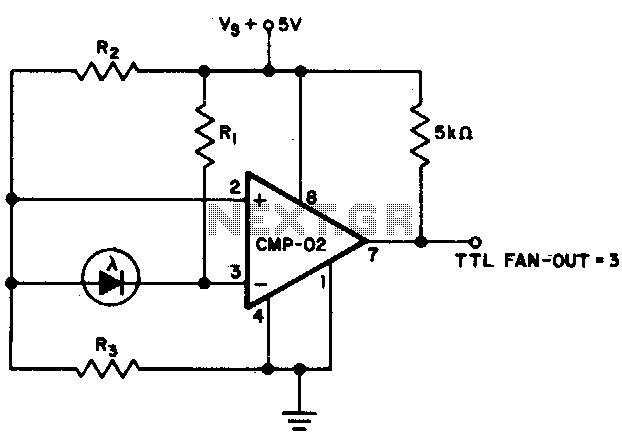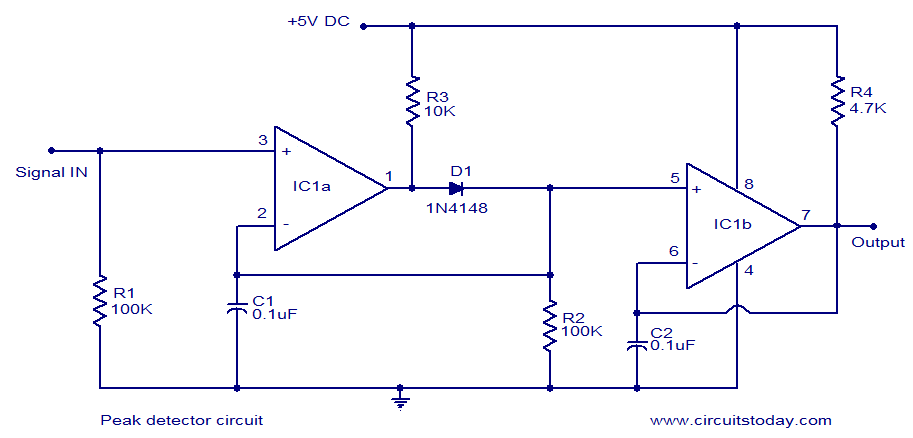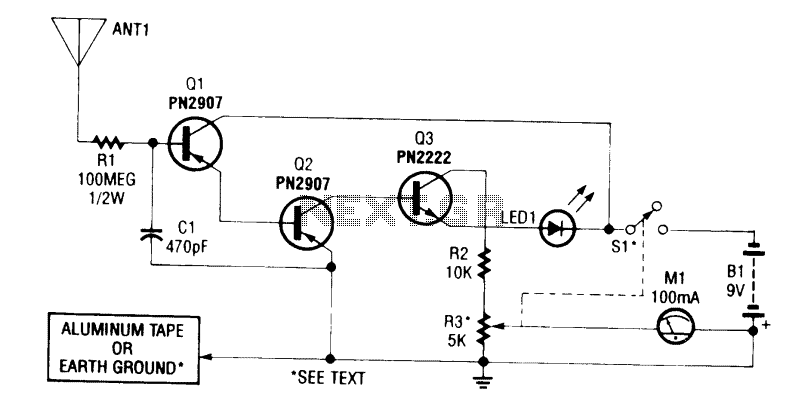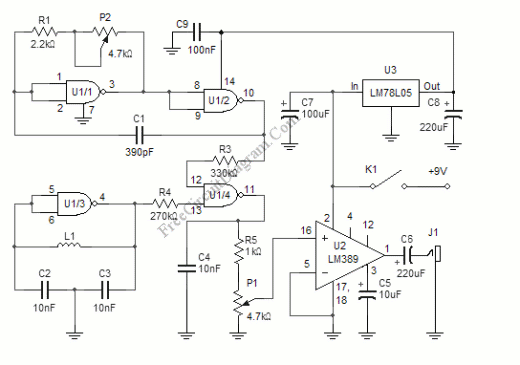
MICROPOWER RADIOACTIVE RADIATION DETECTOR

In the absence of radiation, no current is drawn. At normal background radiation levels, the power consumption is extremely low. The instrument may be left on for several months without changing batteries. In this way, the detector is always ready to indicate an increase in radiation. An LED is used as an indicator lamp. With background radiation, it draws less than 50 µA. A ferrite pot core is used for the transformer with N1=30, N2=550, and N3=7. Using two 1.5V batteries with a total capacity of 0.5 Ah, the detector can operate at background radiation levels for 10,000 hours, which is more than a year.
The described radiation detector operates with minimal power consumption, ensuring prolonged functionality without the need for frequent battery replacements. The absence of radiation results in no current draw, allowing the device to remain in a standby state for extended periods. Under typical background radiation conditions, the power usage is significantly low, measured at less than 50 µA. This low power requirement is crucial for maintaining the operational readiness of the device, which can remain powered for several months on a single battery charge.
The design incorporates an LED indicator that visually signals the presence of radiation, providing immediate feedback to the user. The use of a ferrite pot core transformer is a notable feature, with winding counts of N1=30, N2=550, and N3=7, which helps in efficiently managing the voltage and current levels required for the device's operation. The transformer plays a critical role in ensuring that the detector remains sensitive to radiation changes while consuming minimal energy.
The power supply consists of two 1.5V batteries, yielding a total capacity of 0.5 Ah. This configuration allows the detector to function effectively for an impressive duration of 10,000 hours under normal background radiation levels. This longevity—exceeding one year—highlights the efficiency of the design, making it suitable for applications where continuous monitoring is essential without the burden of regular maintenance or battery replacement. The combination of low power consumption, effective battery life, and immediate visual indication of radiation levels makes this detector a valuable tool in various settings, including environmental monitoring and safety applications.In the absence of radiation, no current is drawn. At normal background radiation levels the power consumption is extremely low. The instrument may be left on for several months without changing batteries. In this way the detector is always ready to indicate an increase in radiation. An LED is used as an indicator lamp. With background radiation it draws less than 50 A ferrite pot core is used for the transformer with N1=30, N2=550, and N3=7. Using two 1. 5V batteries with 0. 5 Ah total capacity, the detector can work at background radiation levels for 0. 5 Ah + 50 A=10, 000 hours, which is more than a year. 🔗 External reference
The described radiation detector operates with minimal power consumption, ensuring prolonged functionality without the need for frequent battery replacements. The absence of radiation results in no current draw, allowing the device to remain in a standby state for extended periods. Under typical background radiation conditions, the power usage is significantly low, measured at less than 50 µA. This low power requirement is crucial for maintaining the operational readiness of the device, which can remain powered for several months on a single battery charge.
The design incorporates an LED indicator that visually signals the presence of radiation, providing immediate feedback to the user. The use of a ferrite pot core transformer is a notable feature, with winding counts of N1=30, N2=550, and N3=7, which helps in efficiently managing the voltage and current levels required for the device's operation. The transformer plays a critical role in ensuring that the detector remains sensitive to radiation changes while consuming minimal energy.
The power supply consists of two 1.5V batteries, yielding a total capacity of 0.5 Ah. This configuration allows the detector to function effectively for an impressive duration of 10,000 hours under normal background radiation levels. This longevity—exceeding one year—highlights the efficiency of the design, making it suitable for applications where continuous monitoring is essential without the burden of regular maintenance or battery replacement. The combination of low power consumption, effective battery life, and immediate visual indication of radiation levels makes this detector a valuable tool in various settings, including environmental monitoring and safety applications.In the absence of radiation, no current is drawn. At normal background radiation levels the power consumption is extremely low. The instrument may be left on for several months without changing batteries. In this way the detector is always ready to indicate an increase in radiation. An LED is used as an indicator lamp. With background radiation it draws less than 50 A ferrite pot core is used for the transformer with N1=30, N2=550, and N3=7. Using two 1. 5V batteries with 0. 5 Ah total capacity, the detector can work at background radiation levels for 0. 5 Ah + 50 A=10, 000 hours, which is more than a year. 🔗 External reference
